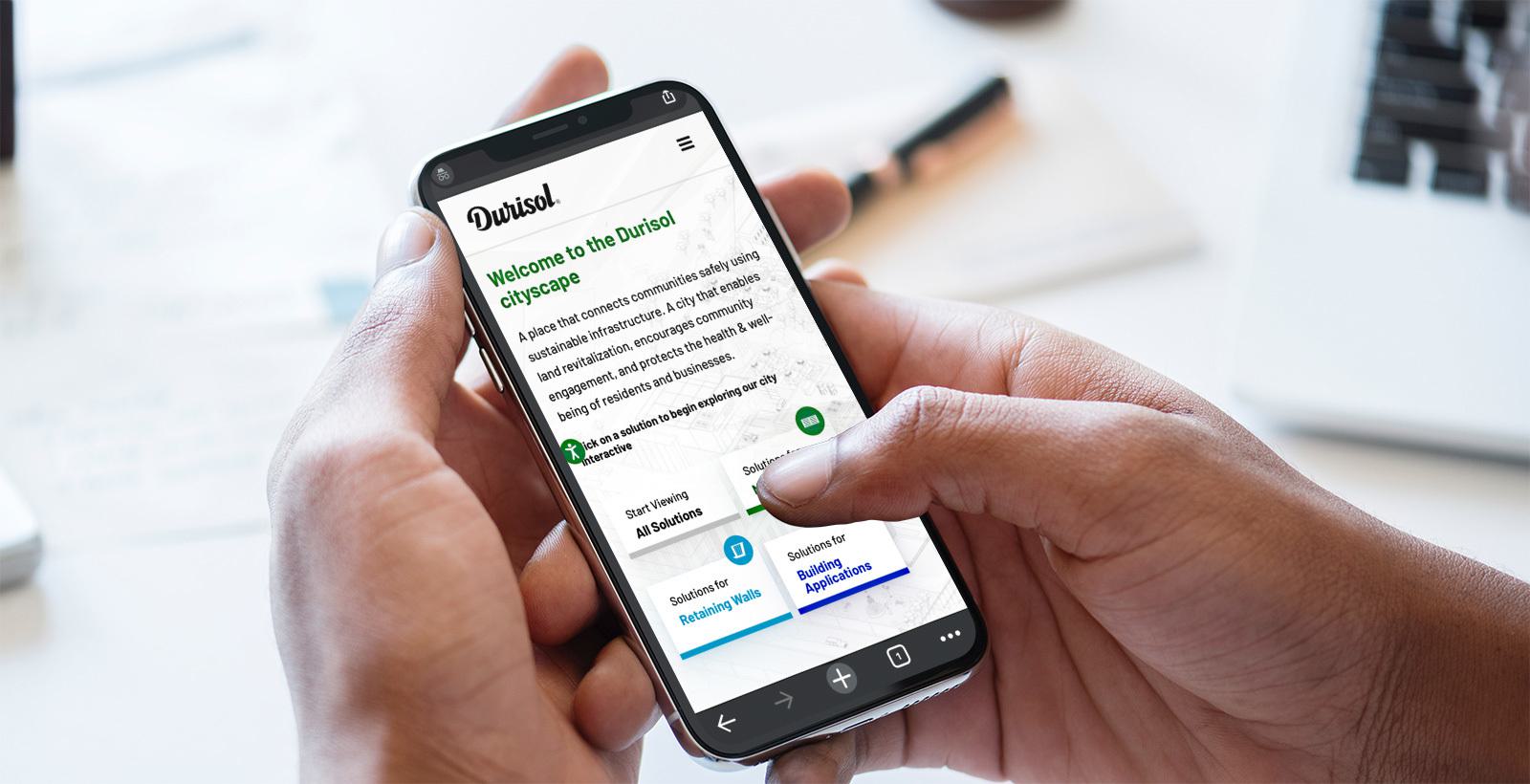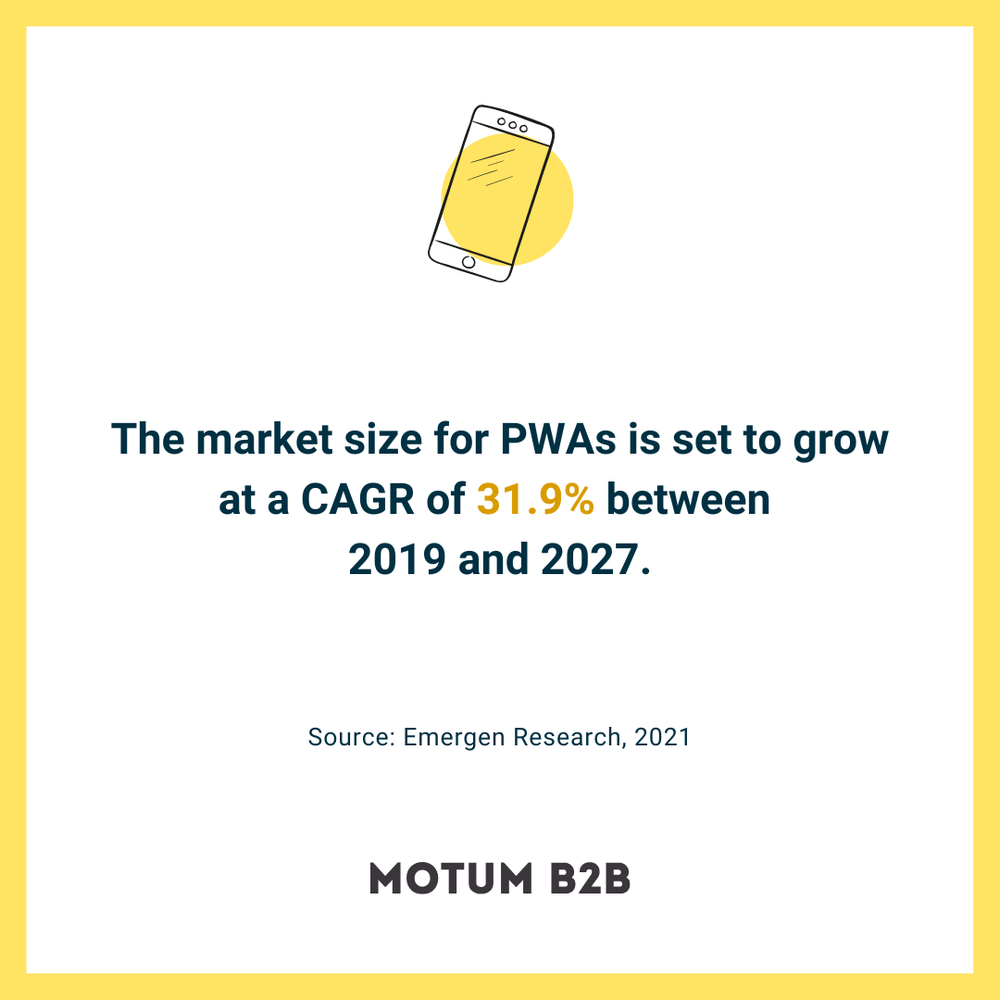5 reasons to build a PWA
As an ideal middle ground between websites and apps, progressive web applications (PWAs) offer an opportunity for B2B businesses to elevate their online experiences.

The use of progressive web applications, or PWAs, is on the rise. Not only has it been reported that the market size for PWAs is set to grow at a CAGR of 31.9% between 2019 and 2027, but we’re at a time when Gen Z and Millennials make up 64% of business buyers and want online B2B experiences that are streamlined and reflect the digital landscape they’re used to.
If you haven’t heard of PWAs, they’re essentially apps built for the web. A PWA looks, feels, and runs like an app but is built using web technologies like HTML, CSS, and JavaScript. They’re fast, effective, and can run across all devices.

The success of PWAs has been well documented in B2C. Trivago saw a 150% increase in engagements and a 97% boost to conversions after launching their PWA, and Spotify used theirs to break its free-to-paid conversion records.
In B2B, where you’ll typically have to provide a digital home to catalogue products, manuals, safety information, service history documents, process payments, or set up demos or site visits, they’re well worth thinking about. Here are five reasons why.
They’re fast
PWAs are synonymous with speed. In comparison to the creation of a traditional mobile app and the upkeep that comes afterwards, PWAs are significantly quicker (and cheaper) to develop. Once they’re live, they’re fast, which is important, given that a 2020 study from Deloitte found a direct, positive correlation between mobile site speed and both funnel progression page views and conversion rates.
They encourage engagement
Thanks to the features available in their design and the fact that they behave like native apps, there’s a lot PWAs can do to encourage engagement. Layouts can be responsive and streamlined, features like geolocation and barcode detection can be integrated, and notifications can prompt someone to return to the page or check out a new product or feature, even when they’re not using the browser.
They’re friction-free
With PWAs accessible directly from a web browser, there's no need to prompt a user to download an app from stores owned by Apple or Google or hope they’ll update to the latest version. Instead, what they navigate to is the latest and greatest version. It's also worth noting that, between 2010 and 2019, 25% of all apps downloaded were only used once, raising questions around how often someone would realistically use a dedicated app (if you had one) in comparison to your website.
They’re discoverable
As Google’s web.dev site shares, “All PWAs are, at their core, modern websites, so it’s important that your website has a solid foundation in responsive design, mobile and everything first, intrinsic design, and web performance.” A key benefit of being web-based is that PWAs are discoverable on search engines, can be optimized with SEO, and shared with a simple hyperlink.
They work offline
While a standard website won’t work offline, a PWA can be designed to still deliver an experience when the green light goes off or you’re stuck on a factory floor without Wi-Fi, offering extra marks for reliability and usability. If you’re using a PWA to store documentation, manuals, or other important details, you can rest assured a user will still be able to access what they need when they need it.
While you’re here, did you know we’re hiring a Social Media Specialist? Learn more about the role and apply here.
